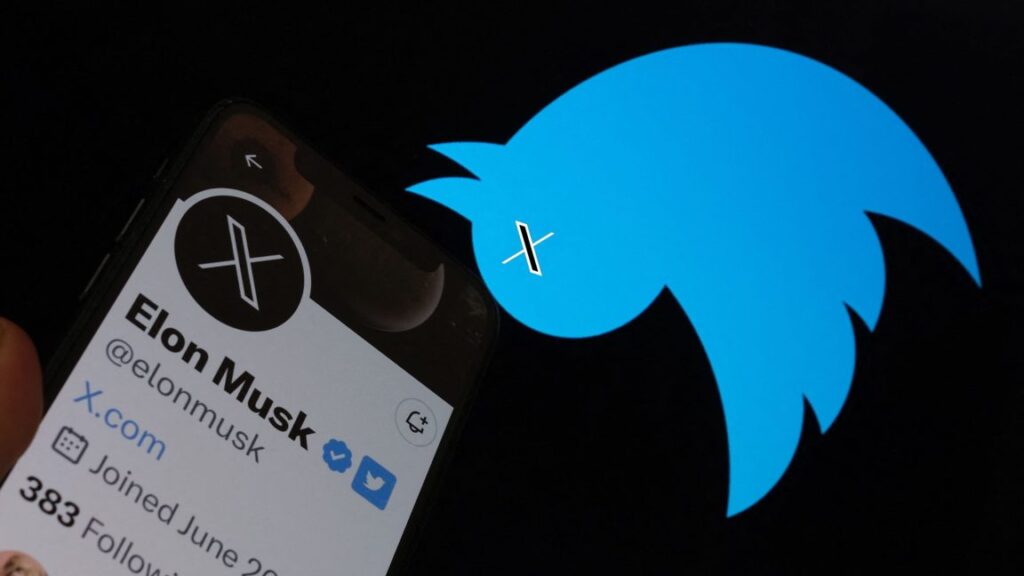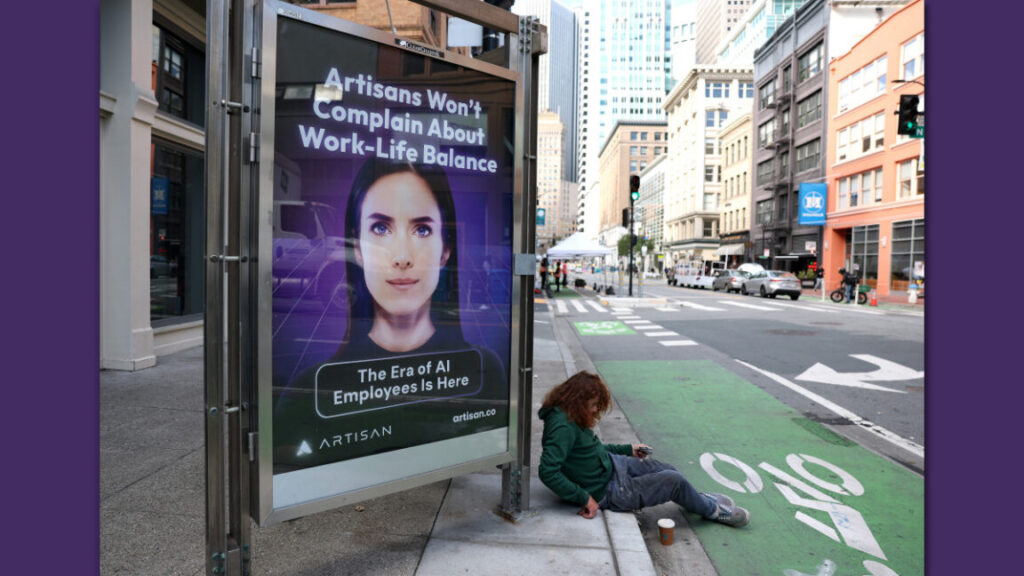Bluesky now platform of choice for science community
It’s not just you. Survey says: “Twitter sucks now and all the cool kids are moving to Bluesky”
Credit: Getty Images | Chris Delmas
Marine biologist and conservationist David Shiffman was an early power user and evangelist for science engagement on the social media platform formerly known as Twitter. Over the years, he trained more than 2,000 early career scientists on how to best use the platform for professional goals: networking with colleagues, sharing new scientific papers, and communicating with interested members of the public.
But when Elon Musk bought Twitter in 2022, renaming it X, changes to both the platform’s algorithm and moderation policy soured Shiffman on the social media site. He started looking for a viable alternative among the fledgling platforms that had begun to pop up: most notably Threads, Post, Mastodon, and Bluesky. He was among the first wave of scientists to join Bluesky and found that, even in its infancy, it had many of the features he had valued in “golden age” Twitter.
Shiffman also noticed that he wasn’t the only one in the scientific community having issues with Twitter. This impression was further bolstered by news stories in outlets like Nature, Science, and the Chronicle of Higher Education noting growing complaints about Twitter and increased migration over to Bluesky by science professionals. (Full disclosure: I joined Bluesky around the same time as Shiffman, for similar reasons: Twitter had ceased to be professionally useful, and many of the science types I’d been following were moving to Bluesky. I nuked my Twitter account in November 2024.)
A curious Shiffman decided to conduct a scientific survey, announcing the results in a new paper published in the journal Integrative and Comparative Biology. The findings confirm that, while Twitter was once the platform of choice for a majority of science communicators, those same people have since abandoned it in droves. And of the alternatives available, Bluesky seems to be their new platform of choice.
Shiffman, the author of Why Sharks Matter, described early Twitter recently on the blog Southern Fried Science as “the world’s most interesting cocktail party.”
“Then it stopped being useful,” Shiffman told Ars. “I was worried for a while that this incredibly powerful way of changing the world using expertise was gone. It’s not gone. It just moved. It’s a little different now, and it’s not as powerful as it was, but it’s not gone. It was for me personally, immensely reassuring that so many other people were having the same experience that I was. But it was also important to document that scientifically.”
Eager to gather solid data on the migration phenomenon to bolster his anecdotal observations, Shiffman turned to social scientist Julia Wester, one of the scientists who had joined Twitter at Shiffman’s encouragement years before, before also becoming fed up and migrating to Bluesky. Despite being “much less online” than the indefatigable Shiffman, Wester was intrigued by the proposition. “I was interested not just in the anecdotal evidence, the conversations we were having, but also in identifying the real patterns,” she told Ars. “As a social scientist, when we hear anecdotal evidence about people’s experiences, I want to know what that looks like across the population.”
Shiffman and Wester targeted scientists, science communicators, and science educators who used (or had used) both Twitter and Bluesky. Questions explored user attitudes toward, and experiences with, each platform in a professional capacity: when they joined, respective follower and post counts, which professional tasks they used each platform for, the usefulness of each platform for those purposes relative to 2021, how they first heard about Bluesky, and so forth.
The authors acknowledge that they are looking at a very specific demographic among social media users in general and that there is an inevitable self-selection effect. However, “You want to use the sample and the method that’s appropriate to the phenomenon that you’re looking at,” said Wester. “For us, it wasn’t just the experience of people using these platforms, but the phenomenon of migration. Why are people deciding to stay or move? How they’re deciding to use both of these platforms? For that, I think we did get a pretty decent sample for looking at the dynamic tensions, the push and pull between staying on one platform or opting for another.”
They ended up with a final sample size of 813 people. Over 90 percent of respondents said they had used Twitter for learning about new developments in their field; 85.5 percent for professional networking; and 77.3 percent for public outreach. Roughly three-quarters of respondents said that the platform had become significantly less useful for each of those professional uses since Musk took over. Nearly half still have Twitter accounts but use it much less frequently or not at all, while about 40 percent have deleted their accounts entirely in favor of Bluesky.
Making the switch
User complaints about Twitter included a noticeable increase in spam, porn, bots, and promoted posts from users who paid for a verification badge, many spreading extremist content. “I very quickly saw material that I did not want my posts to be posted next to or associated with,” one respondent commented. There were also complaints about the rise in misinformation and a significant decline in both the quantity and quality of engagement, with respondents describing their experiences as “unpleasant,” “negative,” or “hostile.”
The survey responses also revealed a clear push/pull dynamic when it came to the choice to abandon Twitter for Bluesky. That is, people felt they were being pushed away from Twitter and were actively looking for alternatives. As one respondent put it, “Twitter started to suck and all the cool people were moving to Bluesky.”
Bluesky was user-friendly with no algorithm, a familiar format, and helpful tools like starter packs of who to follow in specific fields, which made the switch a bit easier for many newcomers daunted by the prospect of rebuilding their online audience. Bluesky users also appreciated the moderation on the platform and having the ability to block or mute people as a means of disengaging from more aggressive, unpleasant conversations. That said, “If Twitter was still great, then I don’t think there’s any combination of features that would’ve made this many people so excited about switching,” said Shiffman.
Per Shiffman and Wester, an “overwhelming majority” of respondents said that Bluesky has a “vibrant and healthy online science community,” while Twitter no longer does. And many Bluesky users reported getting more bang for their buck, so to speak, on Bluesky. They might have a lower follower count, but those followers are far more engaged: Someone with 50,000 Twitter/X followers, for example, might get five likes on a given post; but on Bluesky, they may only have 5,000 followers, but their posts will get 100 likes.
According to Shiffman, Twitter always used to be in the top three in terms of referral traffic for posts on Southern Fried Science. Then came the “Muskification,” and suddenly Twitter referrals weren’t even cracking the top 10. By contrast, in 2025 thus far, Bluesky has driven “a hundred times as many page views” to Southern Fried Science as Twitter. Ironically, “the blog post that’s gotten the most page views from Twitter is the one about this paper,” said Shiffman.
Ars social media manager Connor McInerney confirmed that Ars Technica has also seen a steady dip in Twitter referral traffic thus far in 2025. Furthermore, “I can say anecdotally that over the summer we’ve seen our Bluesky traffic start to surpass our Twitter traffic for the first time,” McInerney said, attributing the growth to a combination of factors. “We’ve been posting to the platform more often and our audience there has grown significantly. By my estimate our audience has grown by 63 percent since January. The platform in general has grown a lot too—they had 10 million users in September of last year, and this month the latest numbers indicate they’re at 38 million users. Conversely, our Twitter audience has remained fairly static across the same period of time.”
Bubble, schmubble
As for scientists looking to share scholarly papers online, Shiffman pulled the Altmetrics stats for his and Wester’s new paper. “It’s already one of the 10 most shared papers in the history of that journal on social media,” he said, with 14 shares on Twitter/X vs over a thousand shares on Bluesky (as of 4 pm ET on August 20). “If the goal is showing there’s a more active academic scholarly conversation on Bluesky—I mean, damn,” he said.
“When I talk about fish on Bluesky, people ask me questions about fish. When I talk about fish on Twitter, people threaten to murder my family because we’re Jewish.”
And while there has been a steady drumbeat of op-eds of late in certain legacy media outlets accusing Bluesky of being trapped in its own liberal bubble, Shiffman, for one, has few concerns about that. “I don’t care about this, because I don’t use social media to argue with strangers about politics,” he wrote in his accompanying blog post. “I use social media to talk about fish. When I talk about fish on Bluesky, people ask me questions about fish. When I talk about fish on Twitter, people threaten to murder my family because we’re Jewish.” He compared the current incarnation of Twitter as no better than 4Chan or TruthSocial in terms of the percentage of “conspiracy-prone extremists” in the audience. “Even if you want to stay, the algorithm is working against you,” he wrote.
“There have been a lot of opinion pieces about why Bluesky is not useful because the people there tend to be relatively left-leaning,” Shiffman told Ars. “I haven’t seen any of those same people say that Twitter is bad because it’s relatively right-leaning. Twitter is not a representative sample of the public either.” And given his focus on ocean conservation and science-based, data-driven environmental advocacy, he is likely to find a more engaged and persuadable audience at Bluesky.
The survey results show that at this point, Bluesky seems to have hit a critical mass for the online scientific community. That said, Shiffman, for one, laments that the powerful Black Science Twitter contingent, for example, has thus far not switched to Bluesky in significant numbers. He would like to conduct a follow-up study to look into how many still use Twitter vs those who may have left social media altogether, as well as Bluesky’s demographic diversity—paving the way for possible solutions should that data reveal an unwelcoming environment for non-white scientists.
There are certainly limitations to the present survey. “Because this is such a dynamic system and it’s changing every day, I think if we did this study now versus when we did it six months ago, we’d get slightly different answers and dynamics,” said Wester. “It’s still relevant because you can look at the factors that make people decide to stay or not on Bluesky, to switch to something else, to leave social media altogether. That can tell us something about what makes a healthy, vibrant conversation online. We’re capturing one of the responses: ‘I’ll see you on Bluesky.’ But that’s not the only response. Public science communication is as important now as it’s ever been, so looking at how scientists have pivoted is really important.”
We recently reported on research indicating that social media as a system might well be doomed, since its very structure gives rise to the toxic dynamics that plague so much of social media: filter bubbles, algorithms that amplify the most extreme views to boost engagement, and a small number of influencers hogging the lion’s share of attention. That paper concluded that any intervention strategies were likely to fail. Both Shiffman and Wester, while acknowledging the reality of those dynamics, are less pessimistic about social media’s future.
“I think the problem is not with how social media works, it’s with how any group of people work,” said Shiffman. “Humans evolved in tiny social groupings where we helped each other and looked out for each other’s interests. Now I have to have a fight with someone 10,000 miles away who has no common interest with me about whether or not vaccines are bad. We were not built for that. Social media definitely makes it a lot easier for people who are anti-social by nature and want to stir conflict to find those conflicts. Something that took me way too long to learn is that you don’t have to participate in every fight you’re invited to. There are people who are looking for a fight and you can simply say, ‘No, thank you. Not today, Satan.'”
“The contrast that people are seeing between Bluesky and present-day Twitter highlights that these are social spaces, which means that you’re going to get all of the good and bad of humanity entering into that space,” said Wester. “But we have had new social spaces evolve over our whole history. Sometimes when there’s something really new, we have to figure out the rules for that space. We’re still figuring out the rules for these social media spaces. The contrast in moderation policies and the use (or not) of algorithms between those two platforms that are otherwise very similar in structure really highlights that you can shape those social spaces by creating rules and tools for how people interact with each other.”
DOI: Integrative and Comparative Biology, 2025. 10.1093/icb/icaf127 (About DOIs).
Jennifer is a senior writer at Ars Technica with a particular focus on where science meets culture, covering everything from physics and related interdisciplinary topics to her favorite films and TV series. Jennifer lives in Baltimore with her spouse, physicist Sean M. Carroll, and their two cats, Ariel and Caliban.
Bluesky now platform of choice for science community Read More »




